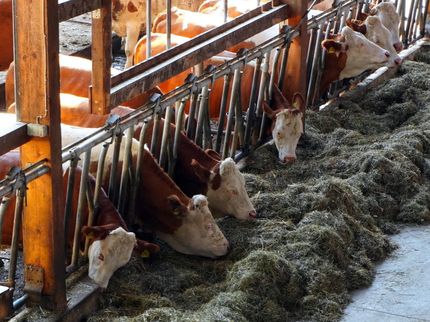New insights on drought and heat vulnerability of maiz and wheat
Too hot and too dry: the summer of 2018 saw losses in arable crops of up to 50 percent in some regions of Germany. As such weather extremes are likely to increase in the future, adapting agriculture to climate change is crucial. Important strategies include agronomic management and breeding of more tolerant crops. For plant breeders it is essential to know whether plants are more vulnerable to heat or drought. An international research team led by the Leibniz Centre for Agricultural Landscape Research (ZALF) is providing new answers to this question.

For plant breeders it is essential to know whether plants are more vulnerable to heat or drought.
Wilfried Mirschel / ZALF
"Understanding whether we expect most risk to crop production under climate change to come from drought or heat stress can help farmers and breeders select the right varieties and farm management," says Dr. Heidi Webber. The agricultural scientist, head of the working group "Integrated Crop System Analysis" at the Leibniz Centre for Agricultural Landscape Research (ZALF), is the lead author of the current publication.
Investigating yield losses across Europe
For the study, the international research team looked at yields of grain maize and winter wheat in European agriculture. Using 10 models, the team investigated, among others, the relative share of heat versus drought in explaining yield losses. Looking at national and regional (NUTSII) statistics between 1984 and 2009 allowed the team to evaluate that the models could reproduce past yield fluctuations before projecting yields of the two crops under climate change to 2055. If crop varieties and planting dates remain the same, the results suggest that the yields of grain maize will decrease, while those of winter wheat will increase. This was not surprising as additional CO2 in the atmosphere benefits winter wheat more than maize. Elevated CO2 was thought to help maize withstand more drought, though the study suggests that in extremely dry years increasing atmospheric CO2 will be of no benefit in protecting against losses from drought. Climate adaptation, whether through breeding, increasing irrigation, switching to new crops, or having insurance against losses is therefore crucial. Understanding that drought presents the biggest risk to arable crops can help farmers and policy makers in selecting among the options. This is where Webber sees the particular value of the new findings.
New research approach
In a new research approach, Webber and her team took current findings from plant physiology research into account to show, for the first time for large scale crop production, what it is about higher temperatures that cause yield losses. Warmer temperatures affect crop growth in three different ways. Rapid development in hot years means the plants mature before capturing as much radiation as in cooler years having thus less time to grow biomass. High temperatures also can disrupt critical reproductive function in flowers and seeds, leading to big reductions in grain yield. The third, and in this case decisive, possibility is the high evaporation rate which occurs on hot days and in turn can lead to drought stress when there is insufficient rainfall and no irrigation. "Earlier studies for Europe which showed that high temperatures explain the majority of yield losses, did not take into account that water stress is a likely important outcome of hot days," said Webber. Prof. Frank Ewert, Scientific Director at ZALF and Professor of Crop Science at the University of Bonn adds: "Another major achievement of this study is to take into account uncertainties in the estimation of drought and heat stress events of several models calculated by leading modelling groups in Europe and internationally."
When Dr. Webber explains these processes, she is aware of how contradictory it can seem at first: "If there is a heat spell in the fields, it's almost always also too dry. So it seems illogical to consider two separate problems here." The problem is that the protective mechanisms of plants against drought stress are very different from those against overheating. They can even be mutually exclusive and are difficult to control for in field experiments. When plants protect themselves from drought by evaporating less water, they no longer evaporate water from the soil to cool their flowers and leaves. They become hotter, which in turn can cause heat damage. This is why it is so important to make the right decision as to what the plants need to be adapted to. New modelling approaches and experimental tools can be combined to explain which responses and options are likely to be most robust.
Most read news
Organizations
Other news from the department business & finance

Get the food & beverage industry in your inbox
By submitting this form you agree that LUMITOS AG will send you the newsletter(s) selected above by email. Your data will not be passed on to third parties. Your data will be stored and processed in accordance with our data protection regulations. LUMITOS may contact you by email for the purpose of advertising or market and opinion surveys. You can revoke your consent at any time without giving reasons to LUMITOS AG, Ernst-Augustin-Str. 2, 12489 Berlin, Germany or by e-mail at revoke@lumitos.com with effect for the future. In addition, each email contains a link to unsubscribe from the corresponding newsletter.




























































